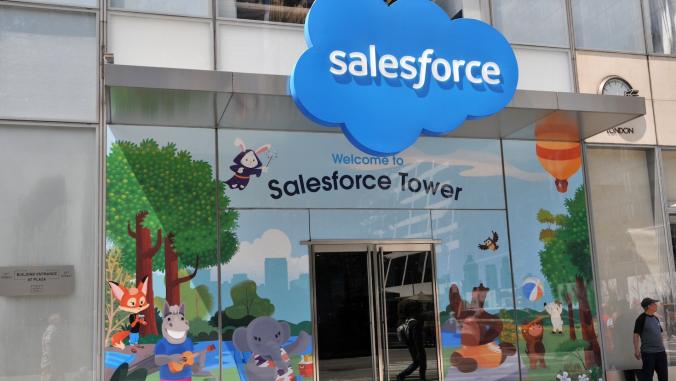Virtual reality meets sustainability
Technologies from the likes of Facebook, Google and Microsoft could change our worldview for the good of the planet.

The headlines are chock-full of breathless stories about two much-anticipated computer headset systems — Microsoft’s HoloLens and Facebook’s Oculus Rift — that you might dismiss as fringe products that will appeal only to avid gamers or science-fiction nerds.
However, the impact that these emerging technologies could have on everything from supply chain management to self-driving vehicles to preservation of natural habitats is very real. Indeed, companies such as aviation giant Airbus Group, car manufacturer Audi and retailer Lowe’s already are experimenting with Microsoft’s product.
What are these things, anyway?
Technically speaking, both HoloLens and Rift fall under the broad category of virtual reality (VR) technology — a phrase coined back in 1938 by a French theater philosopher. The idea is that by donning a cumbersome, head-mounted display someone can immerse himself or herself in an alternate depiction of reality.
Most people usually associate this sort of experience with entertainment applications, ones that place someone completely in an alternate or fantasy world. As you “walk” or move forward, the landscape changes around you. One Canadian theme park, for example, is adding VR headsets to a popular roller coaster so that riders "feel" as if they’re riding a dragon instead of simply hurtling up, down and around an ordinary track. Other parks plan similar attractions.
These are the sorts of experiences that Oculus Rift — and other high-end VR systems such as the new HTC Vive — could help shape in the months to come. If you check out the company’s website, it touts a variety of games. That’s probably not so interesting to corporate sustainability teams.
What’s more intriguing, however, are the unique 360-degree-view panoramas from around the world that many of us wouldn’t otherwise be able to visit. These "worlds" could be used as the foundation to help more people visit delicate, far-flung habitats without endangering the ecosystem in the process.

Microsoft is prioritizing a different sort of experience with HoloLens, one that allows someone wearing the headset to see computer-generated images or holographs alongside a view of her existing environment. This is known as augmented reality (AR), a concept that anyone who has watched "Star Trek" or "Star Wars" should be able to grasp more easily.
Another company likely to help define this space is Magic Leap, a mysterious startup that has raised hundreds of millions in venture capital from the likes of Google, Qualcomm and Chinese e-commerce giant Alibaba.
And don’t write off Glass from Alphabet, the parent of Internet search company Google. Even though it’s downplaying consumer sales, the Glass team is redesigning it with a host of corporate applications in mind that could matter to corporate sustainability initiatives — from tech-enabled field service and maintenance services to smart manufacturing.
How could I use this stuff?
Most experts consider augmented reality to be a subset of the larger VR movement, but the short-term revenue projections for related hardware and software is actually much larger. Research firm Digi-Capital projects sales of $120 billion by 2020, with about three-quarters of that amount related to AR technologies — especially commercial applications.
Several early adopters of HoloLens, for example, are using it for structural engineering projects or prototyping new product designs.
Trimble, which sells software for architects and building project designers, touts AR technology as vital for speeding collaboration on blueprints. Teams can "test" new ideas, displaying them as three-dimensional holographs using HoloLens to see them rather than trying to draw them on paper. They also can view suggestions in context, which could help them eliminate the ones that don’t make sense for a particular environment for either aesthetic or practical reasons.
Retailer Lowe’s plans to use HoloLens closer to home in its showrooms, allowing shoppers to envision remodeling projects — and avoiding potential waste along the way. Its first scenarios focus on kitchens. IKEA is doing something similar, using HTC Vive.
AR applications are also creeping their way into the supply chain management world. SAP, for example, has crafted a warehouse operations systems that use smart glasses from Vuzix to provide real-time data about products and materials.
The high-level motivation is efficiency, but the software could be used to keep tabs on whether suppliers are conforming with sustainable sourcing guidelines. European logistics company DHL, along with another software company, Ubimax, began experimenting with this concept in January 2015.

What could delay this reality?
As with pretty every emerging technology, it probably will take longer than passionate advocates expect for permutations of virtual reality to invade the real world in a meaningful way.
For one thing, these systems aren’t inexpensive: Rift, for example, costs almost $600. HoloLens isn’t actually available in a consumer edition yet: the developer version, meant for those developing applications, costs $3,000.
Another consideration is aesthetic and cultural: it’s one thing to don a pair of protective glasses on the job. It’s another thing entirely to strap a bulky headset, which could weigh more than a pound, around your forehead. (Right now, the Rift weighs in at slightly less than a pound, while HoloLens is about 1.25 pounds.) The "form factor" still leaves much to be desired.
Wearing VR systems cloud also present health and safety issues ranging from the practical (you could wind up accidentally walking into objects in the real world) to physical side effects such as nausea or eye strain.
Still, it would be a mistake to avert your eyes from this opportunity.
"Just as smart phones and apps revolutionized how we interact and transact with each other, virtual reality is going to change the entire world over the long term," wrote Macquarie Securities analyst Ben Schachter in a February research note. "The amount of investment that will happen over the next five years will be surprising to many people."





